
Desription
- Subject:
- Science
- Material Type:
- Lesson
- Provider:
- Reimagine Teaching
- Provider Set:
- Thanksgiving Point
- Date Added:
- 11/13/2020

Desription

This is a second-grade student science experience tied to SEEd standard 2.2.2. In this experience students investigate how the structure of the body parts of fish help them to function and survive.
These experiences were designed to support students in engaging in science investigations with siblings and/or parents at home and then report back about what was discovered. They were created in a way that is easily adaptable for both online and printed formats. They are formatted to help students wonder about and investigate the science phenomena happening in the world around them. These experiences do not describe how students should write up and return work to their teacher. It is up to each teacher to adapt them to best meet student needs. When individualized by the teacher, a student could be asked to engage in one or more of these experiences a week and report back. This format aligns closely to the vision and expectation of the SEEd standards.
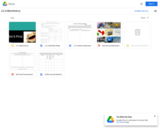
Google folder with Googles Slides and accompanying studnent journal files

This is a second-grade student science experience tied to SEEd standard 2.3.3. In this experience students explore how objects with different functions can be made of the same pieces.
These experiences were designed to support students in engaging in science investigations with siblings and/or parents at home and then report back about what was discovered. They were created in a way that is easily adaptable for both online and printed formats. They are formatted to help students wonder about and investigate the science phenomena happening in the world around them. These experiences do not describe how students should write up and return work to their teacher. It is up to each teacher to adapt them to best meet student needs. When individualized by the teacher, a student could be asked to engage in one or more of these experiences a week and report back. This format aligns closely to the vision and expectation of the SEEd standards.
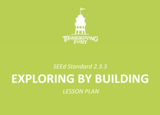
Develop and use a model to describe how an object, made of a small set of pieces, can be disassembled and reshaped into a new object with a different function. Emphasize that a great variety of objects can be built from a small set of pieces. Examples of pieces could include wooden blocks or building bricks.

This problem with multiple solutions offers an opportunity for students to practice simple addition and subtraction, work with number sentences (equations), and develop systematic work habits. Given cards containing the addition, subtraction and equal signs along with the digits 2, 4, 6, and 8. solvers are challenged to find as many ways as possible to arrange some or all seven cards to create true statements. The Teachers' Notes page offers suggestions for implementation, discussion questions, ideas for extension and support, printable cards (pdf) and a link to an interactive Flash applet.
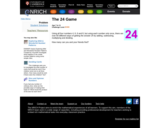
This number challenge is an opportunity to reinforce mental arithmetic and order of operations while developing systematic work habits. Students are asked to use the numbers 4, 6, 6, and 8 (exactly once each) and the four basic operations to find as many ways as they can to represent the number 24. There are over 60 different ways! The Teachers' Notes page includes suggestions for implementation, discussion questions, ideas for support, and a link to a related article, Opening Out. (cataloged separately).
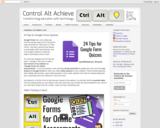
Share some great Google Forms practices with your students through this amazing post from Control Alt Achieve.

The 26th Amendment to the United States Constitution bars the federal government, as well as all state and local governments, from using age as a justification for denying the right to vote to any citizen of the United States who is at least 18 years of age. In addition, the Amendment grants Congress the power to “enforce” that prohibition through “appropriate legislation.”
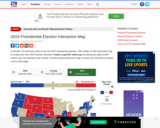
An interactive map that shows electoral college results for presidential elections. Also includes historical elections back to 1789, and various elections for Senate, House of Representatives, and governors. Students can also interactive with and manipulate the map to see how elections would have turned out with different results.
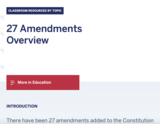
This resource from the National Constitution Center includes an introduction, big questions, recorded class sessions, briefing documents, slide decks, and worksheets about the 27 amendments of the United States Constitutuion.
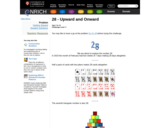
In this open-ended investigation, students use visualizing skill and work systematically to explore surface area. Learners use linking cubes to build three-dimensional objects with exactly 28 faces exposed. Ideas for implementation, extension and support are included.

This is a lesson plan that will help educators teach Kindergarten students about 2D and 3D shapes, how to identify, sort them and design their own using marshmallows and toothpicks. Assessments and Rubrics are included to assess students on identifying, sorting, and designing 2D and 3D shapes.The image used in the Image Title was a screen shot taken from the Youtube Assessment that is linked to the lesson plan. It is Titled "2D or 3D Shapes: Under the Sea Math Brain Break" by Move and Groove Math It is licensed under CC BY-SA 4.0
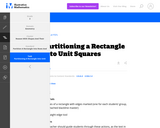
This is a task from the Illustrative Mathematics website that is one part of a complete illustration of the standard to which it is aligned. Each task has at least one solution and some commentary that addresses important aspects of the task and its potential use.
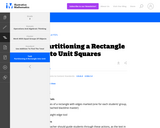
This is a task from the Illustrative Mathematics website that is one part of a complete illustration of the standard to which it is aligned. Each task has at least one solution and some commentary that addresses important aspects of the task and its potential use.
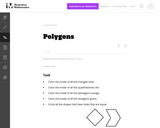
This is a task from the Illustrative Mathematics website that is one part of a complete illustration of the standard to which it is aligned. Each task has at least one solution and some commentary that addresses important asects of the task and its potential use. Here are the first few lines of the commentary for this task: * Color the inside of all the triangles blue. * Color the inside of all the quadrilaterals red. * Color the inside of all the pentagons orange. * Color...

This is a task from the Illustrative Mathematics website that is one part of a complete illustration of the standard to which it is aligned. Each task has at least one solution and some commentary that addresses important asects of the task and its potential use. Here are the first few lines of the commentary for this task: Materials * Alexander, Who Used to be Rich Last Sunday by Judith Viorst * Plastic coins * Labels for items Alexander spent his money on (attached) * Pa...
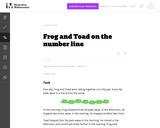
This is a task from the Illustrative Mathematics website that is one part of a complete illustration of the standard to which it is aligned. Each task has at least one solution and some commentary that addresses important asects of the task and its potential use. Here are the first few lines of the commentary for this task: One day, Frog and Toad were sitting together on a lily pad. Some lily pads were in a line across the pond. In the morning, Frog hopped three lily pads ...
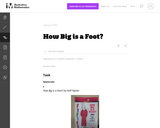
This is a task from the Illustrative Mathematics website that is one part of a complete illustration of the standard to which it is aligned. Each task has at least one solution and some commentary that addresses important asects of the task and its potential use. Here are the first few lines of the commentary for this task: Materials * How Big is a Foot? by Rolf Myller * Masking tape * Enough 12-inch (one foot) rulers for every student or pair of students * One yardstick *...
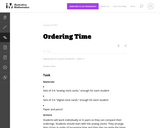
This is a task from the Illustrative Mathematics website that is one part of a complete illustration of the standard to which it is aligned. Each task has at least one solution and some commentary that addresses important asects of the task and its potential use. Here are the first few lines of the commentary for this task: Materials * Sets of 3-6 "analog clock cards," enough for each student * Sets of 3-6 "digital clock cards," enough for each student * Paper and pencil A...